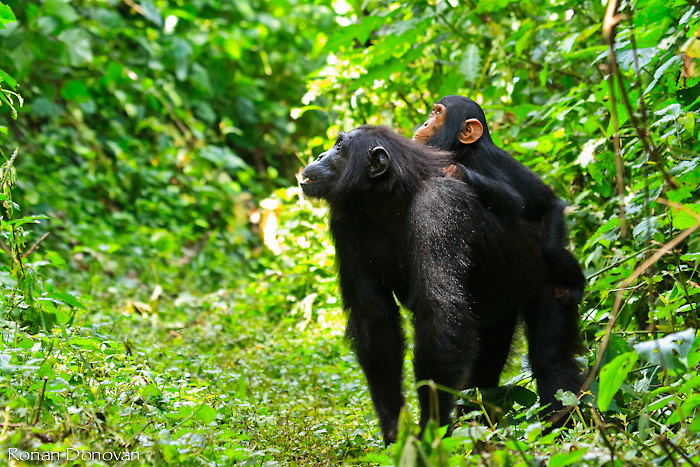Media release
From:
Wild chimpanzees learn how to communicate from relatives on mom’s side, not dad’s
Combinations of vocal and non-vocal signals are learned socially and unlikely to be controlled genetically
Young chimpanzees learn their communication style from their mother and maternal relatives, but show little similarity to the communication behavior of their father and paternal relatives, according to a study publishing August 5th in the open-access journal PLOS Biology by Joseph Mine at the University of Zurich, Switzerland, and colleagues.
Human children learn how to communicate as they develop, and their communication behavior is heavily influenced by their main caregivers. Although chimpanzees also communicate using vocal signals, gestures, postures and facial expressions, it is unclear whether these behaviors are learned or determined genetically.
To investigate, researchers observed the behavior of 22 wild chimpanzees (Pan troglodytes), which have been habituated to the presence of humans, in Kibale national park, Uganda. They recorded vocal signals, including grunts, barks and whimpers, as well as non-vocal communication, such as arm movements, gaze direction and body postures. They found that the chimpanzees’ communication style, measured as how many combinations of vocal and non-vocal behaviors they typically produced, showed a strong similarity to that of their mother and maternal relatives, but not of their father and paternal relatives. These results suggest that chimpanzees’ communication style may involve a learned component, since chimpanzee mothers are the main caregivers and fathers do not contribute to parenting.
The study shows that how chimpanzees combine vocal and non-vocal signals is unlikely to be as genetically determined as previously thought, and instead may be learned socially, similar to the way humans learn to communicate. All the chimpanzees observed in the study were over the age of 10, when they start to become more independent from their mother, indicating that influences of maternal kin have a lasting impact on chimpanzee communication behavior. The results imply that social learning of communication is more evolutionarily ancient than previously thought, the authors say.
Joseph Mineadds, “What we see is that certain chimpanzee mothers tend to produce many vocal-visual combinations, while others produce few. And the offspring end up behaving like the mothers, resulting in family-specific tendencies.”
Co-author Simon Townsend notes, “In humans, body language includes hand gestures and facial expressions, but also many subtle behaviours, like shifts in posture and gaze direction. With our approach, we were able to assess whether chimpanzees learn about these less salient features as well.”
Co-author Katie Slocombe concludes, “I think it’s fascinating that mothers who produce more visual behaviours when they vocalise, raise offspring that follow suit. The next exciting step will be to see if offspring are learning certain types of visual-vocal combinations from their mothers, in addition to the number of visual behaviours they produce when they vocalise.”
Multimedia







 International
International



